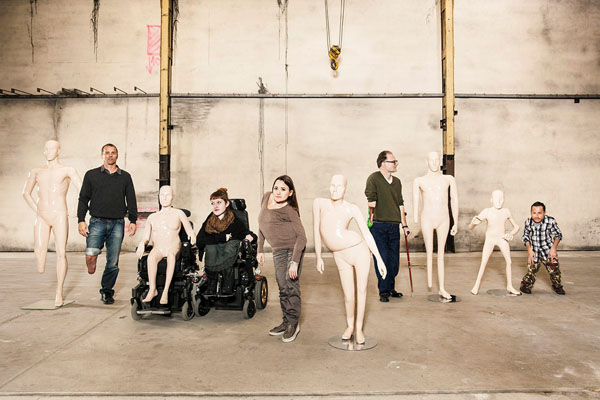Store mannequins are meant to be reflections of ourselves. They’re not. Working on the assumption that perfect bodies sell tons of clothes, retailers want mannequins that are tall, thin and beautifully proportioned when in fact most of us are ordinary schlumps.
Two recent events have not only challenged that assumption but used mannequins as agents of social change.
Pro Infirmis is a Swiss charity which represents the disabled. In addition to counselling and practical assistance it runs an annual series of high-profile public awareness campaigns. Last year it partnered with ad agency Jung von Matt to create a series of not-so-perfect mannequins with scoliosis, brittle bones and shortened limbs. Designed to mark the International Day of Persons with Disabilities (December 3, 2013), the goal was to make the disabled feel better about themselves and to remind the rest of us that bodies come in all shapes and sizes. The campaign was called “Because no-one’s perfect. Come closer.”
Five volunteers agreed to be poked, prodded and measured so their proportions could be replicated in plastic. A compelling video was produced to commemorate the process. Watch it here.
The completed mannequins were placed in five shops along Zurich’s high end shopping district, the Baknkofstrasse, eliciting both bewilderment and approval and, when the models saw themselves in the window, pride. “For me it was a special moment when I saw my disabled body for the first time as an idealized mannequin,” says Jasmine Rechsteiner, one of the models and Miss Handicap 2010.
In a similar move last April, British designer Vivienne Westwood partnered with Leo Burnett Advertising to comment on domestic violence, a serious problem in Italy and around the world. Her Milan showroom featured perfectly proportioned mannequins dressed in torn clothing and sporting black eyes and bruises.

Although these public displays draw attention to ongoing problems, not everybody welcomes this incursion into social activism. According to the Twitterverse, some disabled persons consider the Pro Infirmis campaign nothing more than a publicity stunt exploiting the very people it pretends to champion. Critics believe social issues are trivialized when co-opted by the fashion industry. Reaction to the Vivienne Westwood campaign has been more muted. What do you think?










